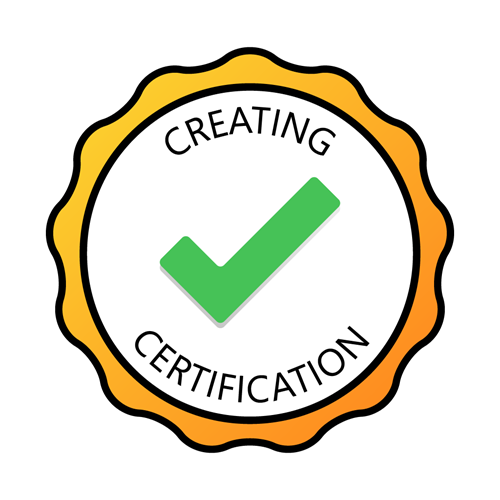Delight your customers: Zoom-into excellence
We live in data creating and data driven times. https://www.domo.com/blog/2014/04/data-never-sleeps-2-0/
We need to zoom in on specific areas to gain expertise. Of course if you are a mad meta person you might not be a 'zoom-in' person, but let's focus on the zoom-in version.
On zooming-out: The classic effects of adding another zero: https://www.youtube.com/watch?v=0fKBhvDjuy0 from the brothers Eames #eames #powersof10
Zooming-in on a specific content area facilitates the development of your expert status.
Certification is a path to validate and achieve recognition for your level of competency in a specific data domain.
This is the basis for degree program recognition and the reasoning for encouraging you to develop your organization's path to certification(s).
Launching a certification program requires project management skills:
Have clear goals in mind
Have expertise or access to expertise (SMEs are Subject Matter Experts) for the domain content
Establish with your program stake holders a timeline for their prioritized deliverables
Have in mind your growth trends and known resources: Always consider scalability and replicability concerns as well as localization plans. Starting with the end goals in mind improves planning effectiveness
Find your preferred collaboration tools https://online-collaboration-tools.zeef.com/robin.good and discover what works best for your team with your content and delivery goals.
Iterate consistently.
The need to be sufficiently rigorous and sufficiently flexible is an art that you will continually need to refine.
Even when leveraging an agile release cycle http://www.ambysoft.com/essays/agileLifecycle.html there are steps you will need to take to make your Certification Project successful:
- Discovery
- Goal Setting & Timelines
- Content Development including topics and sub-topics
- Test 'blue print' development maps to content development and includes number of questions per topic and sub-topics, the exam point weight per question, the pass-fail percentage, possible number of re-takes allowed, life of the certification exam, and can include exam pricing policy
- Development of Question Pool of test questions for validation and pilot and for developing multiple versions of your certification exam
- Hands-on interactive environment (as appropriate to content topics and audience)
- Platform for distributing exam
- Develop a Success Package available upon successful completion of certification exam
- Communications include internal communications with stakeholders and SMEs and externally for program launch with partners and customers
- Metrics including initial Key Performance Indicators (KPIs) Clear metrics supports on-going certification validity and development rigor
- Reporting cycle allows rapid results analysis for both quality of content and for analyzing content traction and program success
- Ease of feedback path for participants is key to maintaining your certified community's engagement and supports exam freshness and accuracy
Deeper Dive
Successful Discovery includes:
Who is the target audience
What is the context and what are the program goals
What are the participants expected to do
What is most relevant for the participants' success
Find gaps and innovate non-boring ways to address to address and resolve
Define the achievement and strategize for delivering scalable and replicable processes
Find the best tools for collaboration
Leverage resources and work wonderfully with SMEs (Subject Matter Experts)
Create --> Pilot --> Assess --> Iterate --> Launch --> Report
Continue the cycle
Deliver on time and on budget best in class content
Update your content as needed: Keep it engaging, non-boring, achievement oriented, work relevant
Provide multiple paths to content mastery
Provide achievement status and KPIs (Key Performance Indicators)
Reports and data visualization
(Interactive Data Visualization for the Web by Scott Murray)
